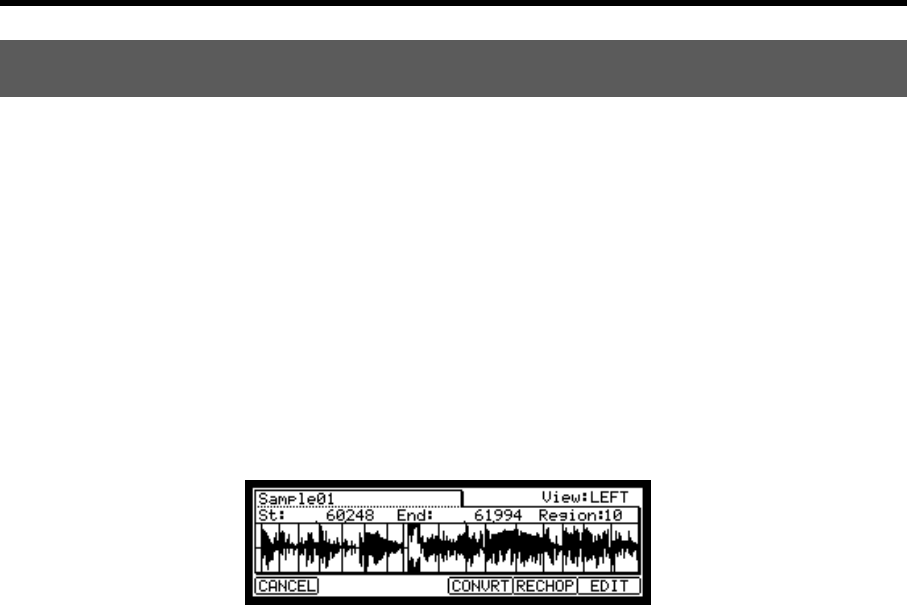User guide
Table Of Contents
- warning_page.pdf
- MPC1000
- Table of contents
- Chapter 1 : Introduction
- Chapter 2 : Basic Operation
- Chapter 3 : Sequencer feature
- MAIN page
- Recording the performance
- Playing back a sequence
- Other useful features for recording sequences
- Detailed information on sequence feature
- Setting the length of a sequence
- Setting the time signature of the sequence
- Setting tempo
- Setting the loop for a sequence
- Changing the default settings
- Changing the sequence name
- Changing the default name for a sequence
- Copying a sequence
- Deleting a sequence
- Deleting all sequences
- Handling the duration (the length of a note) at the loop boundary
- Track features
- MIDI sequencer features
- Chapter 4 : Editing sequences
- Chapter 5 : Step editing
- Chapter 6 : Song mode
- Chapter 7 : Functions of a pad
- Chapter 8 : Q-Link slider
- Chapter 9 : Using the MPC1000 with external devices
- Chapter 10 : Recording a sample
- Chapter 11 : Editing a sample
- Chapter 12 : Program
- Creating a program
- Assigning/Reassigning samples to the pads
- Playing the sample while the pad is being hit
- Setting the volume and the tuning for a sample
- Changing the sample volume with velocity
- Playing several samples with one pad
- Switching between samples using velocity
- Setting the envelope for a pad
- The functions in the Program window
- Editing the sound of a sample
- Simulating the open/close hi-hat (setting the mute group)
- Setting the overlap of the sounds on the same pad (voice overlap)
- Delete all the unused samples at the same time (PURGE)
- Setting a MIDI note number to the pads
- Assigning MIDI note numbers to the pads (changing the default setting)
- Chapter 13 : Mixer
- Chapter 14 : Effect
- Chapter 15 : Save / Load
- Chapter 16 : Connecting the MPC1000 to your computer
- Chapter 17 : Other settings
- Appendix

MPC1000 v2 Operator’s Manual rev 1.0
61
Adjusting the start / end point of the region.
A Region is each part of a sample that is divided with the sliced point.
01. After pressing the [F5] (DO IT) in the “SLICE” window, the “SLICE” page will be displayed.
You can adjust the start/end point of each region in this page.
In the SLICE page, hitting Pad 1-12 will trigger each selected region.
Tips :
If you want to re-try dividing a sample, press the [F5] (RECHOP) key. The “SLICE” window will be displayed and you can set it again..
If you want to stop the “SLICE” feature, press the [F1] (CANCEL) key. The display will go back to the “TRIM” page.
02. In the Region field, select the region number you wish to use to adjust the start/end point.
The selected regions waveform will become the reversal display.
03. In the St: field, adjust the start point of the region.
You can change the start point by turning the DATA Wheel key. If you press the left/right cursor key while holding
the [SHIFT] key, you can select individual digits to change with the DATA wheel.
Note : Each start point of a region is same as the end point of the previous region. If you change the start point of a region, the end point
of the previous region will be changed automatically.
04. In the End: field, adjust the end point of the region.
You can change the end point the same way as the start point.
Note : Each end point of a region is same as the start point of the next region If you change the end point of a region, the start point of the
next region will be changed automatically.
If you want to re-try Dividing a sample, press the [F5] (RECHOP) key. The “SLICE” window will be displayed and
you can try a different setting.
If you press the [F6] (EDIT) key, the Region Edit window will be displayed. You can extract, divide, or combine
regions in this page. Refer to page 64 “Other available edits for Region”.
If you wish to cancel the SLICE function, press the [F1] (CANCEL) key, the TRIM page will be displayed.
After adjusting the start/end point of the region, you can convert the regions to SLICED SAMPLES or PATCHED PHRASE.










